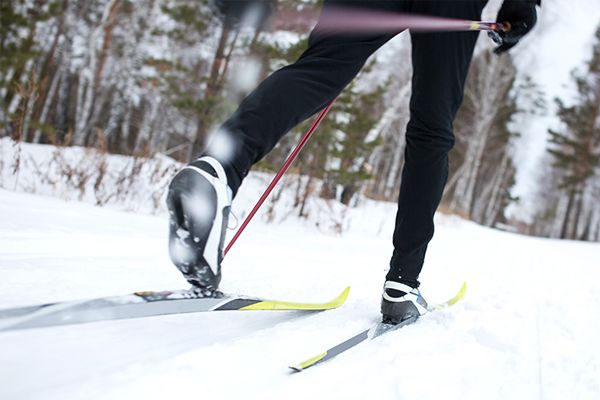The 5 best strength exercises for cross country skiing

With the cross country skiing season just around the corner, it’s a great time to work on the conditioning that will make skiing easier, faster and more fun.
There are three areas common to sport-specific exercise programs – strength, endurance and skill. The following exercises cover a range of muscle groups including the powerful quadriceps and gluteal muscles of the things and hips, the lats and triceps of the back and arms, and the abdominal and erector spinae muscles of the core.
Deadlift
What you need: Barbell and weights.
Form: With hands on the bar and feet shoulder width apart, squat down so that your thighs are parallel to the ground. Keep your head up and looking forward throughout the lift. This helps ensure your back remains flat and not rounded. During the lift, straighten your legs and back, keeping the bar close to your shins. Lower the bar back down again along the same path. Make sure your knees do not travel further ahead than your toes while they bend. Complete a set of 8-10 repetitions, rest 1 minute and repeat. Complete 3 sets.
Muscles engaged: This exercise engages many muscle groups, especially the quadriceps of the thighs, the gluteals of the hip/butt and the erector spinae of the back.
Why it’s important: The quads and gluteals are powerful muscles that help drive the body forward during the push phase of skiing while the erector spinae muscles help support the body in the forward lean position of cross-country skiing.

Single Leg Squat
What you need: Chair with our without dumbbells.
Form: Stand with hands on hips and reach back with one leg to place your toes about half a meter behind you. Squat with the other leg, ensuring your knee does not move in front of your toes. Stand back up again. Complete a set of 10-12 repetitions, rest 1 minute and repeat. Complete 3 sets. For more of a challenge, hold a dumbbell in each hand.
Muscles engaged: This exercise targets the quads and gluteals similar to the deadlift, but in a single-leg fashion, similar to the single-leg push off of cross country skiing.
Why it’s important: The single leg squat focuses less on strength than the deadlift but is more sports-specific, allowing a better transfer of strength gains into sport gains. It is also great for working on balance, a key skill in skiing.

Side Squat
What you need: A weight or dumbbells.
Form: Stand with your feet together, holding a weight at your chest or dumbbells in your hands. Step directly sideways with one leg dropping down into a squat with your thigh parallel to the floor and your knee no more forward than your toes. Push explosively off the squatting leg and back up into the standing position. Do the same motion on the opposite side. Repeat the side to side motion 10 times, rest 1 min and repeat. Complete 3 sets.
Muscles engaged: This exercise targets the quads and gluteals in a very similar way to skiing.
Why it’s important: The explosive motion of the push-off helps develop power in a very –sport specific motion, building on the strength foundation provided by the deadlift and single-leg squat .

Triceps Pull Downs
What you need: Pulley system or resistance band
Form: Stand facing a pulley or attach a resistance band to a hook at head height or above. Grasp a rope attachment of the pulley or each end of the resistance band with hands at chin level. Extend your hands downwards towards your hips and straighten your elbows. Slowly come back up to the starting position. Complete a set of 10-15 repetitions, rest 1 minute and repeat. Complete 3 sets.
Muscles engaged: This exercise targets the triceps muscles of the arms and the latissimus dorsi of the back.
Why it’s important: This exercise is the polling motion of skiing and is a great way to build strength for the push phase.

Plank
What you need: Nothing.
Form: Support yourself horizontally, propped up on your elbows and toes. Hold this position for 30 seconds, relax for 30 seconds and repeat. Complete a set of 8-10 repetitions.
Muscles engaged: This exercise engages many muscles, most importantly the rectus abdominmus muscle of the abdomen.
Why it’s important: The abdominal muscles along with the erector spinae muscles of the back keep your body stable while skiing. The better these muscles are at providing you with stability, the more your legs and arms will be able to push you forward without pushing you over.

A physiotherapist can help ensure you’re doing the exercises with the proper form, work with you to adapt the exercises to suit your particular needs and help deal with any limitations or discomfort preventing you from achieving your goals.
Give your Lifemark physiotherapist a call today to help get you started. Soon you’re be gliding across the sparkling snow faster and easier than you thought possible!
We can help you move and feel better.
Book an appointment today.